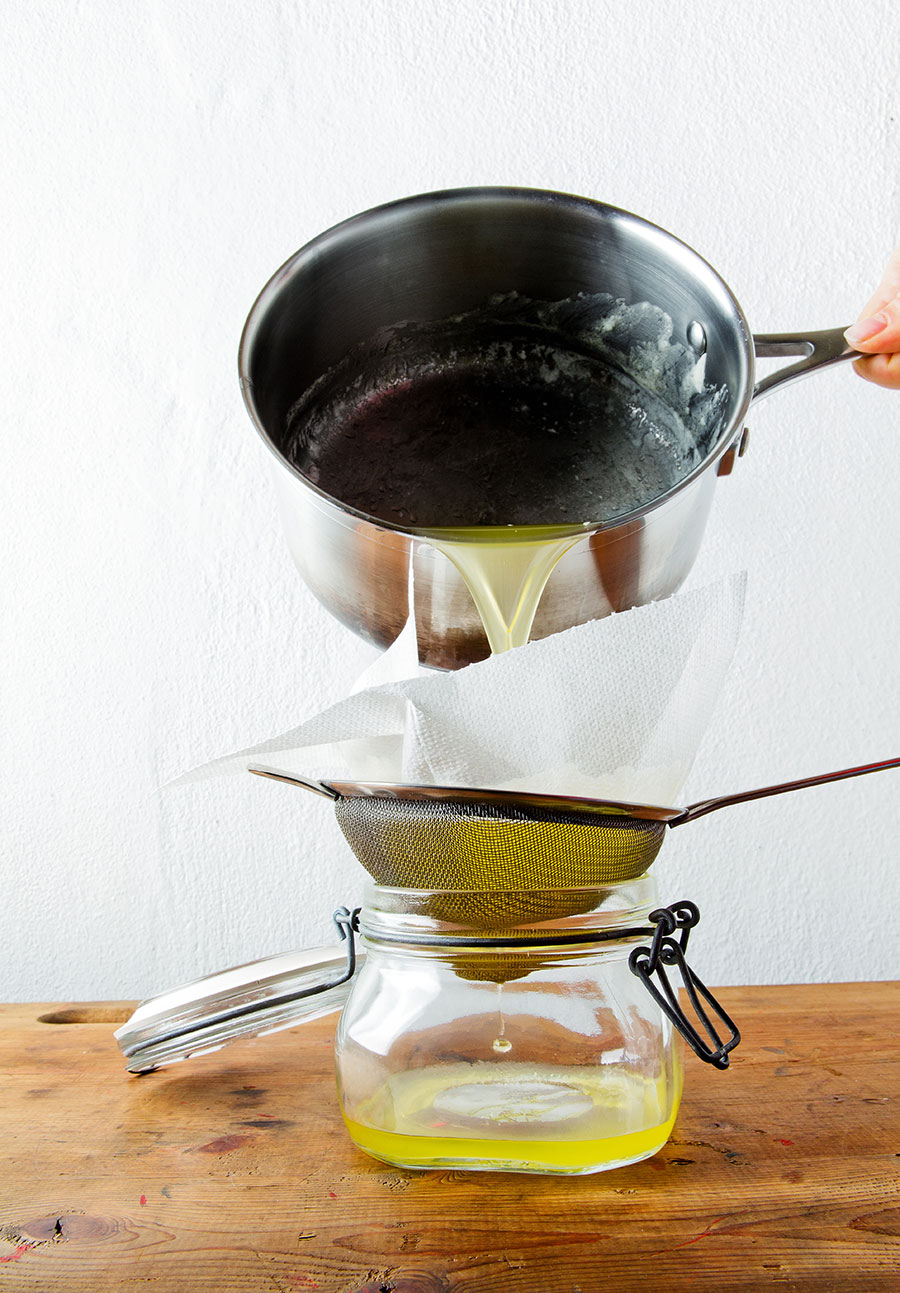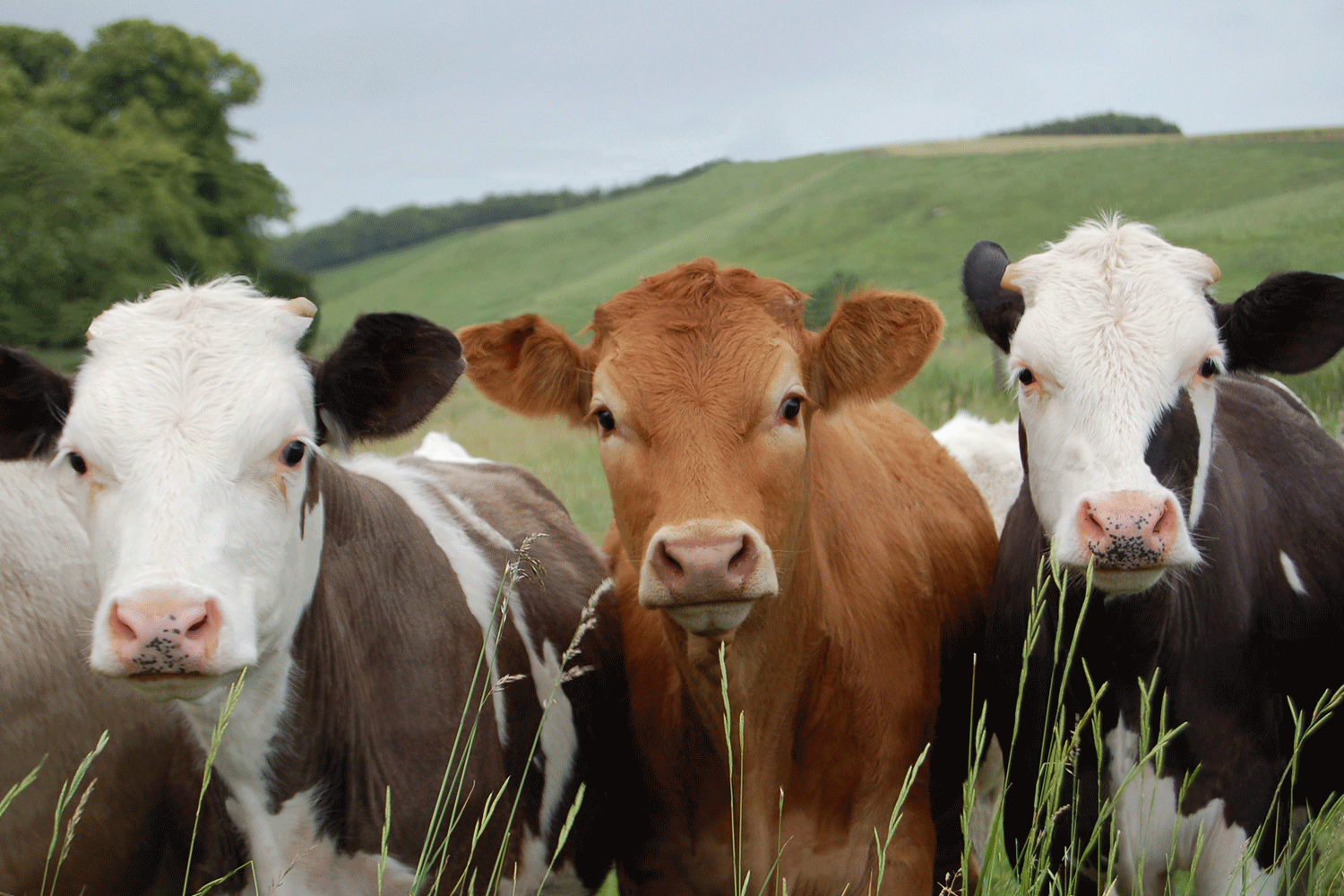Ghee – Is It The Next Big Thing?
Written By: Debbie James, RDN




“Mmmm… butter,” as fondly said during commercials while yellow pats melt on warm bread. But the negative health implications of saturated fat and cholesterol made butter a bad thing. Until now! Clarified butter, called “ghee” – made by slowly melting butter over low heat in order to evaporate water and remove separated milk solids – isn’t believed to have butter’s negative impact on heart disease risk. This translucent, golden liquid with a slightly nutty flavor boasts other benefits as well.
How else does it differ from butter?
Traditionally used frying and sautéing in Indian food, ghee is particularly suited for frying since it has a higher smoke point (up to 485oF) than butter (350oF). It also happens to have a longer shelf life, meaning ghee doesn’t have to be refrigerated! Ghee has a slightly higher calorie, fat and Vitamin A content than butter due to its concentration of fat1. It may be better tolerated by those with lactose intolerance, as it has less than 0.01g lactose per tablespoon (butter has a little more). But since ghee contains insignificant traces of casein, it is still not appropriate for those with a milk allergy. Dairy-free vegetable ghee, known as vanaspati, has no lactose or casein but contains trans-fatty acids and is not part of the following health discussion.
But since ghee contains insignificant traces of casein, it is still not appropriate for those with a milk allergy.
Heart Health: A small intervention study showed benefits on blood lipid profiles after 40 days. Subjects that used ghee oil reduced triglyceride and increased “good” HDL levels, compared to those using regular liquid oil (reduced triglycerides and total cholesterol) or hydrogenated oil (increased total cholesterol)2.

”
Ghee is purported to reduce the risk of heart disease, decrease inflammation, and increase metabolism
-Debbie James, RDN
Metabolic Impact: Interestingly, one study showed that by frying in ghee before boiling (not afterward), the glycemic response to rice was reduced3. This would imply that ghee has the potential to help maintain healthy insulin levels and reduce insulin resistance.
Weight: Does ghee intake translate to a slimmer waistline? Not so. In a study of Indian women, grouped according to their dietary patterns, the group with the highest saturated fat intake including ghee (and butter, hydrogenated oil, condiments, sweets, fish, high-fat dairy and refined grains) had a greater BMI and waist circumferences than the other two groups, whose diets were characterized by either red meat & high fat dairy, or vegetable, fruits & pulses4.
Is Ghee truly good for you?
We don’t concretely know much about Ghee’s benefits yet. Ghee contains short-chain fatty acids and medium-chain triglycerides that are easier to digest than other triglycerides. Beyond digestion, ghee is purported to reduce the risk of heart disease, decrease inflammation, and increase metabolism.
Much of the hype stems from positive results from research on animals. There are far fewer studies on ghee’s impact on human health, perhaps due to the limited population that regularly consumes ghee.
Bottom Line
The substitution of ghee for conventional butter may prevent the damage to blood lipids that butter causes, but you’d still get a high quantity of fat and calories, which may add to the scale. At least you can get your vegetable stir-fry on!
This article should not replace any exercise program or restrictions, any dietary supplements or restrictions, or any other medical recommendations from your primary care physician. Before starting any exercise program or diet, make sure it is approved by your doctor.

Sources
- Ghee Butter. Toby Amidor. Today’s Dietitian 2016 Oct; 10(10): 10.
- Effect of hydrogenated, liquid and ghee oils on serum lipids profile. Mohammadifard N. ARYA Atherosclerosis. 2010 Spring; 6(1):16-22.
- The Glycemic Potential of White and Red Rice Affected by Oil Type and Time of Addition. Kaur B, Ranawana V, Teh AL, Henry CJ Journal of Food Science 2015 Oct; 80(10):H2316-21.
- Major dietary patterns and their associations with cardiovascular risk factors among women in West Bengal, India. Ganguli D. British Journal of Nutrition 2011 May; 105(10):1520-9.









Spot on with this write-up, I actually think this site needs a lot more attention. I’ll probably be returning to see more, thanks for the info!|
It’s nearly impossible to find educated people about this topic, however, you sound like you know what you’re talking about! Thanks|
I appreciate, result in I discovered exactly what I was looking for. You have ended my four day long hunt! God Bless you man. Have a great day. Bye|